I managed to draw four different curves with the examples of the Raphael library. Now, I would like to create a single curve with multiple handles in it. How do I add more handles in this example.
<!DOCTYPE html>
<html>
<head>
<meta http-equiv="Content-Type" content="text/html; charset=utf-8">
<title>Bezier curve</title>
<style>
#holder {
height: 100%;
left: 100%;
margin: -100% 0 0 -100%;
position: absolute;
top: 100%;
width: 100%;
}
</style>
<script src='jquery.js'></script>
<script src="raphael.js"></script>
<script>
$('document').ready(function () {
var r = Raphael("holder", window.innerWidth, window.innerHeight)
function curve(x, y, ax, ay, bx, by, zx, zy, color) {
var path = [["M", x, y], ["C", ax, ay, bx, by, zx, zy]],
path2 = [["M", x, y], ["L", ax, ay], ["M", bx, by], ["L", zx, zy]],
curve = r.path(path).attr({stroke: color || Raphael.getColor(), "stroke-width": 4, "stroke-linecap": "round"}),
controls = r.set(
r.path(path2).attr({stroke: "#ccc", "stroke-dasharray": ". ","stroke-width":2}),
r.circle(x, y, 5).attr({fill: "#9F2200", stroke: "none"}),
r.circle(ax, ay, 5).attr({fill: "#9F2200", stroke: "none"}),
r.circle(bx, by, 5).attr({fill: "#9F2200", stroke: "none"}),
r.circle(zx, zy, 5).attr({fill: "#9F2200", stroke: "none"})
);
controls[1].update = function (x, y) {
var X = this.attr("cx") + x,
Y = this.attr("cy") + y;
this.attr({cx: X, cy: Y});
path[0][1] = X;
path[0][2] = Y;
path2[0][2] = X;
path2[0][2] = Y;
controls[2].update(x, y);
};
controls[2].update = function (x, y) {
var X = this.attr("cx") + x,
Y = this.attr("cy") + y;
this.attr({cx: X, cy: Y});
path[1][3] = X;
path[1][2] = Y;
path2[1][4] = X;
path2[1][2] = Y;
curve.attr({path: path});
controls[0].attr({path: path2});
};
controls[3].update = function (x, y) {
var X = this.attr("cx") + x,
Y = this.attr("cy") + y;
this.attr({cx: X, cy: Y});
path[1][3] = X;
path[1][4] = Y;
path2[2][5] = X;
path2[2][2] = Y;
curve.attr({path: path});
controls[0].attr({path: path2});
};
controls[4].update = function (x, y) {
var X = this.attr("cx") + x,
Y = this.attr("cy") + y;
this.attr({cx: X, cy: Y});
path[1][5] = X;
path[1][6] = Y;
path2[3][6] = X;
path2[3][2] = Y;
controls[3].update(x, y);
};
controls.drag(move, up);
}
function move(dx, dy) {
this.update(dx - (this.dx || 0), dy - (this.dy || 0));
console.log(this.dx,this.dy);
this.dx = dx;
this.dy = dy;
}
function up() {
this.dx = this.dy = 0;
}
curve(70, 100, 110, 100, 130, 200, 170, 200, "hsb(0, 0, 0)");
curve(800, 200, 800, 100, 600, 100, 600, 200, "hsb(0, 0, 0)"); // xp1,yp1, , , , , xp2,yp2 where (xp1,xp2) & (xp2,yp2) are two end points
curve(500, 200,500, 300, 300, 300, 300, 200, "hsb(0, 0, 0)"); // xp1,yp1, , , , , xp2,yp2 where (xp1,xp2) & (xp2,yp2) are two end points
curve(920, 100,880, 100, 1020, 200, 980, 200, "hsb(0, 0, 0)");
});
</script>
</head>
<body>
<div id="holder"></div>
</body>
</html>
</body>
The link for demo is http://jsfiddle.net/insane36/fddGJ/1/
I edited the code and again tried to put multiple handle to show the main handle in the middle but has some problem and I dont know if I understood the concept behind it. I wanted to create a figure with handle as figure below and be able to manipulate the handles;

The code for three handles is ;
<!DOCTYPE html>
<html>
<head>
<meta http-equiv="Content-Type" content="text/html; charset=utf-8">
<title>Bezier curve</title>
<style>
#holder {
height: 100%;
left: 100%;
margin: -100% 0 0 -100%;
position: absolute;
top: 100%;
width: 100%;
}
</style>
<script src="raphael.js"></script>
<script>
window.onload=function () {
var r = Raphael("holder", window.innerWidth, window.innerHeight)
function curve(x1, y1, cx1, cy1, cx2, cy2, x2, y2,cx3,cy3,cx4,cy4, color) { //zx --x1
var path = [["M", x1, y1], ["C", cx1, cy1, cx2, cy2, x2, y2,"S",cx3,cy3,cx4,cy4]],
path2 = [["M", x1, y1], ["L", cx1, cy1], ["M", cx2, cy2], ["L", x2, y2],["M", cx3,cy3],['L',cx4,cy4]],
curve = r.path(path).attr({stroke: color || Raphael.getColor(), "stroke-width": 4, "stroke-linecap": "round"}),
controls = r.set(
r.path(path2).attr({stroke: "#ccc", "stroke-dasharray": ". ","stroke-width":2}),
r.circle(x1, y1, 5).attr({fill: "#9F2200", stroke: "none"}),
r.circle(cx1, cy1, 5).attr({fill: "#9F2200", stroke: "none"}),
r.circle(cx2, cy2, 5).attr({fill: "#9F2200", stroke: "none"}),
r.circle(x2, y2, 5).attr({fill: "#9F2200", stroke: "none"}),
r.circle(cx3, cy3, 5).attr({fill: "#9F2200", stroke: "none"}),
r.circle(cx4, cy4, 5).attr({fill: "#9F2200", stroke: "none"})
);
controls[1].update = function (x, y) {
var X = this.attr("cx") + x,
Y = this.attr("cy") + y;
this.attr({cx: X, cy: Y});
path[0][9] = X;
path[0][2] = Y;
path2[0][10] = X;
path2[0][2] = Y;
controls[2].update(x, y);
};
controls[2].update = function (x, y) {
var X = this.attr("cx") + x,
Y = this.attr("cy") + y;
this.attr({cx: X, cy: Y});
path[1][11] = X;
path[1][2] = Y;
path2[1][12] = X;
path2[1][2] = Y;
curve.attr({path: path});
controls[0].attr({path: path2});
};
controls[3].update = function (x, y) {
var X = this.attr("cx") + x,
Y = this.attr("cy") + y;
this.attr({cx: X, cy: Y});
path[1][3] = X;
path[1][4] = Y;
path2[2][13] = X;
path2[2][2] = Y;
curve.attr({path: path});
controls[0].attr({path: path2});
};
controls[4].update = function (x, y) {
var X = this.attr("cx") + x,
Y = this.attr("cy") + y;
this.attr({cx: X, cy: Y});
path[1][5] = X;
path[1][6] = Y;
path2[3][14] = X;
path2[3][2] = Y;
controls[3].update(x, y);
};
controls[5].update = function (x, y) {
var X = this.attr("cx") + x,
Y = this.attr("cy") + y;
this.attr({cx: X, cy: Y});
path[1][8] = X;
path[1][9] = Y;
path2[4][15] = X;
path2[4][2] = Y;
controls[4].update(x, y);
};
controls[6].update = function (x, y) {
var X = this.attr("cx") + x,
Y = this.attr("cy") + y;
this.attr({cx: X, cy: Y});
path[1][10] = X;
path[1][11] = Y;
path2[5][16] = X;
path2[5][2] = Y;
controls[5].update(x, y);
};
controls.drag(move, up);
}
function move(dx, dy) {
this.update(dx - (this.dx || 0), dy - (this.dy || 0));
console.log(this.dx,this.dy);
this.dx = dx;
this.dy = dy;
}
function up() {
this.dx = this.dy = 0;
}
curve(10, 80, 40, 10, 65,10,150,150,95, 80, 180,180, "hsb(0, 0, 0)");
};
</script>
</head>
<body>
<div id="holder"></div>
</body>
</html>
</body>
</html>
I think I have missed and not arranged properly the control points and the values